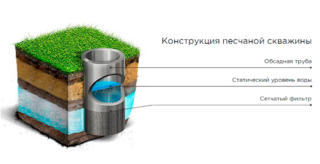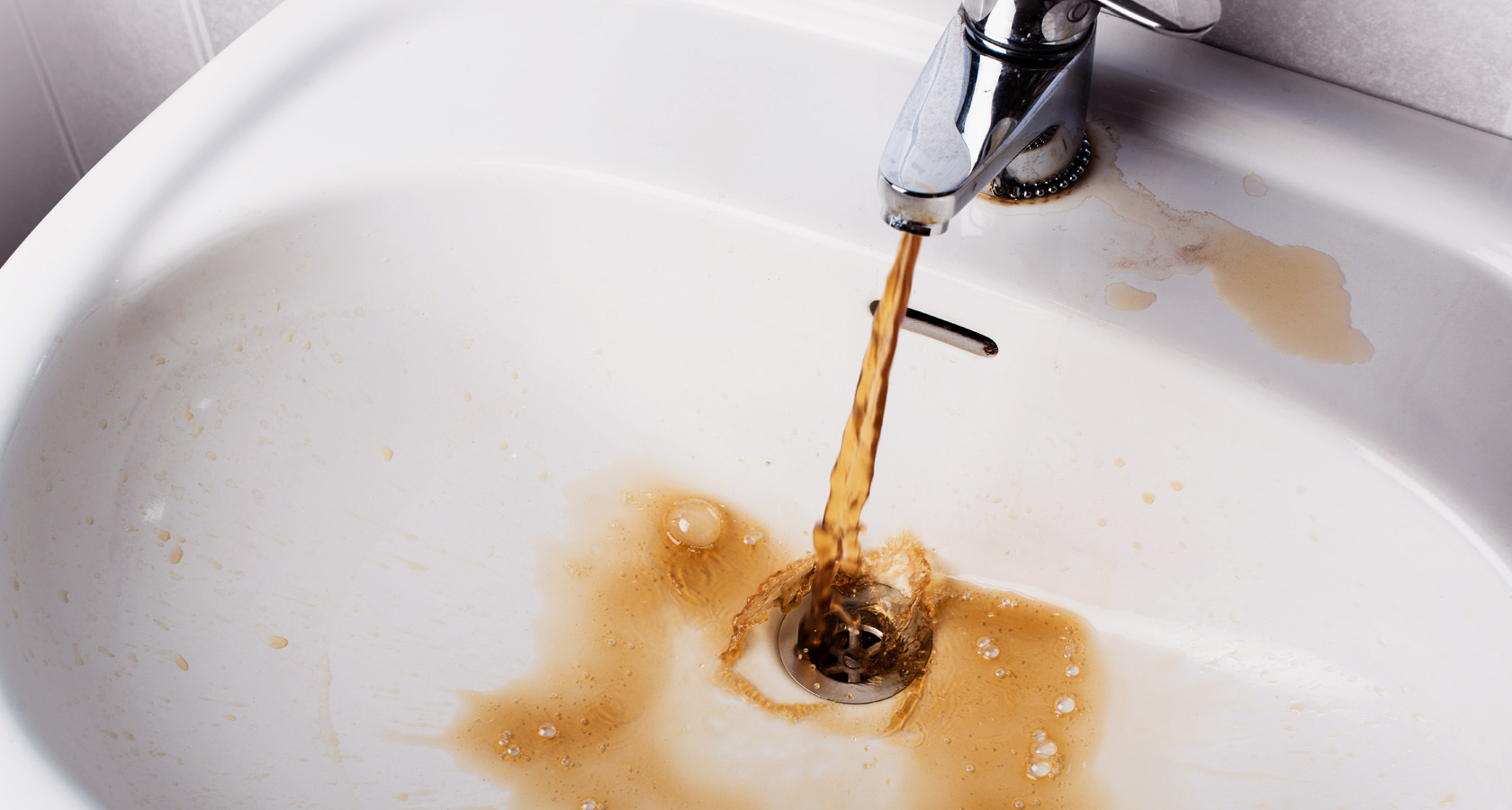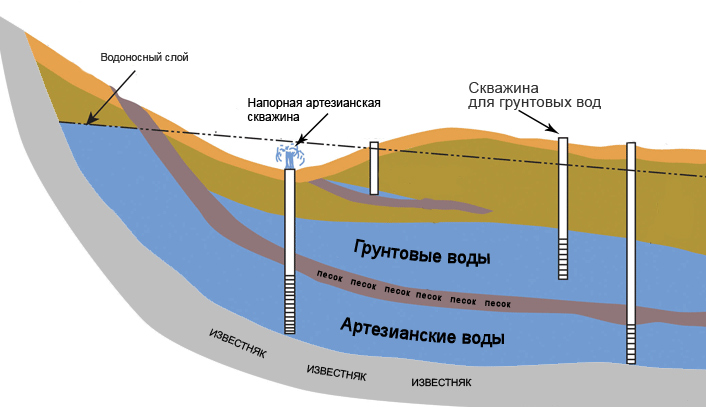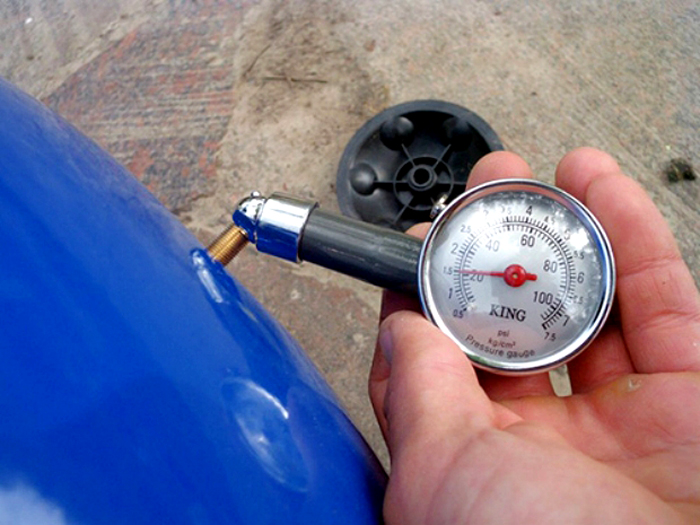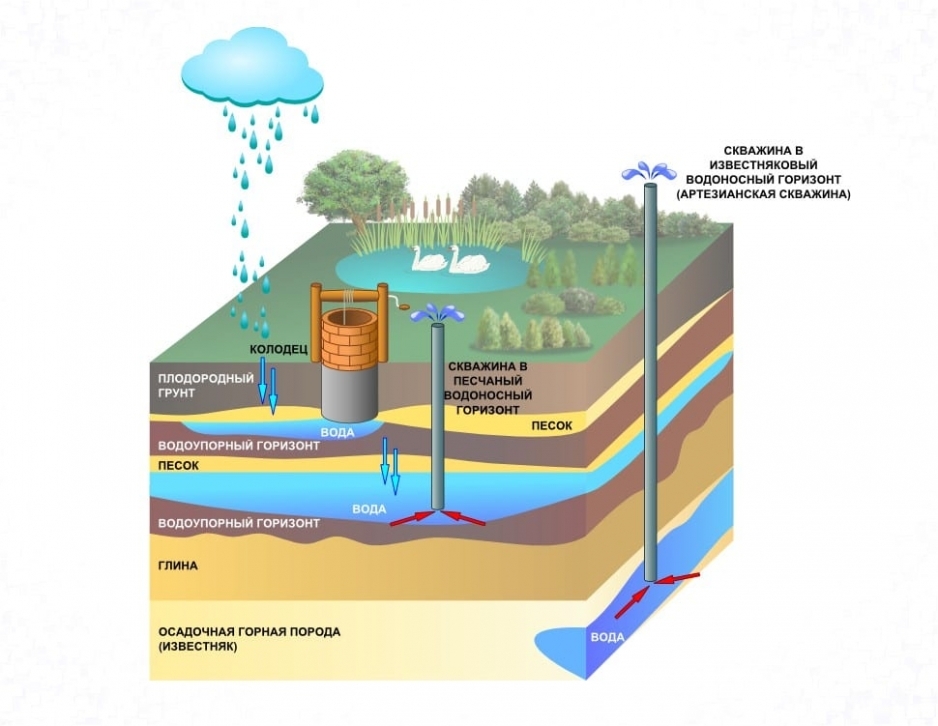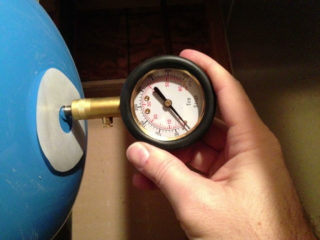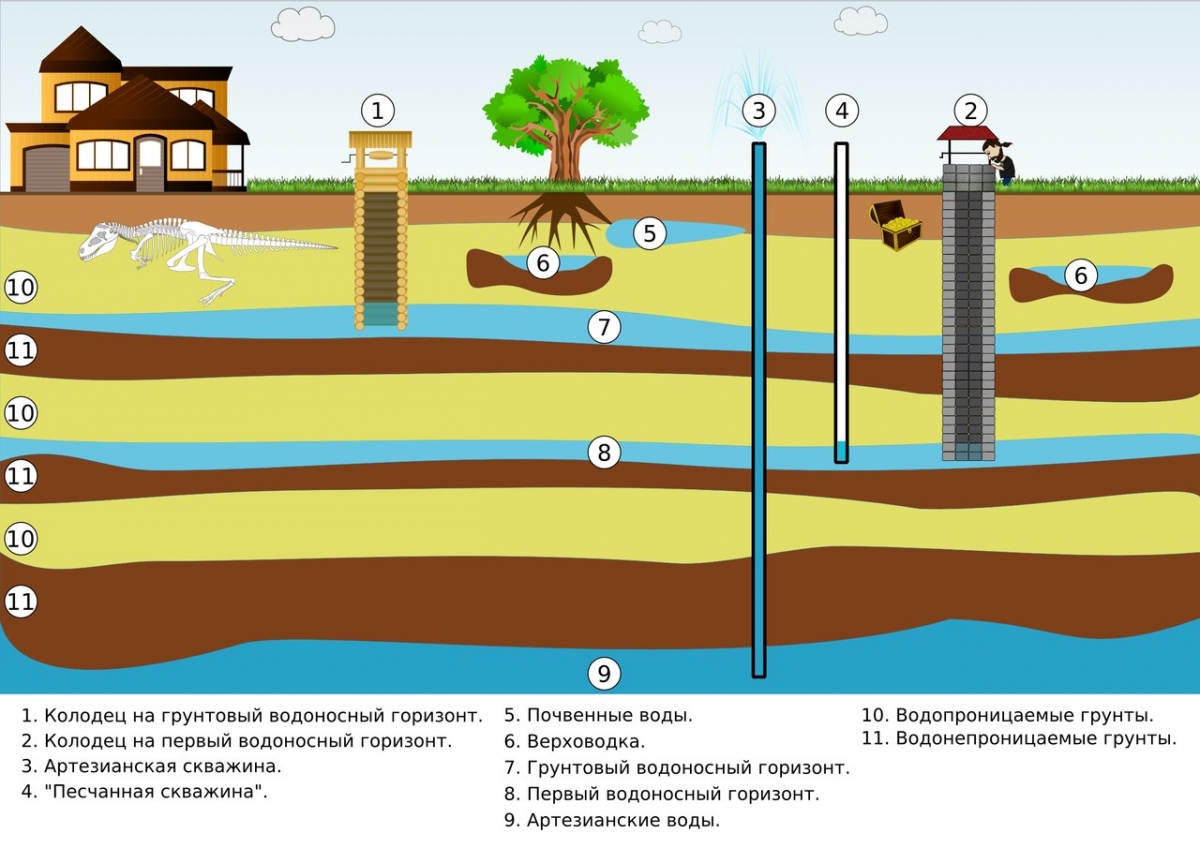For autonomous water supply to private houses and industrial enterprises, a separate water source is required. Most often, a water well is chosen. Knowing the design characteristics of different types of sources, the main components and functional units, as well as the sequence of connecting the equipment, you can create a well for clean water yourself.
Well types and drilling methods

The concept of "well" is very broad. It does not only mean a structure used to supply water. There are other classes of underground mines, distributed according to their purpose: for the extraction of oil, gas, minerals, geological exploration, coal gasification, ventilation of underground structures. There are wells for pipelines located parallel to the surface. To create them, the HDD method is used - horizontal directional drilling.
In everyday life, borehole shafts are used to obtain clean water, as well as for heating, if powerful heat pumps are connected to them.
Depending on the water horizon, the following types of wells are built:
- a source, punched to sandy strata to a depth of 10 to 30 meters;
- Abyssinian well;
- artesian water intake.
In the latter case, water passes between layers of limestone: when creating a mine, an aquifer is drilled. The depth index of such a source is more than 40 m.
The type of water intake device determines the quality of the liquid, the complexity of construction and the performance of the hydraulic structure.
In accordance with Russian legislation - Federal Law "On Subsoil" - drilling a borehole and using a hydraulic facility from the first water layer is possible without registration.
In this category there are not only water intake structures from the upper water, but also a structure on the sand, an Abyssinian well. Drilling methods differ for different types of hydraulic structures.
Abyssinian well
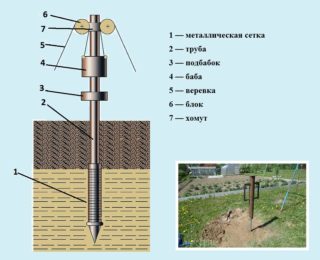
The well design is simple, you can build it yourself. It is suitable for a small house or summer cottage. The liquid is lifted using a manual or ground electric pump through a narrow sealed pipe with a sharp end that looks like a needle. Dirty runoff from the upper water does not penetrate into the well, while there is no strong mineralization, since the mine is not too deep.
The downside is that the construction of a well is possible in a summer cottage or personal plot, where the aquifer passes no deeper than 8-10 meters.
Otherwise, pressure equipment will not be able to raise water to the surface. But such a well is inexpensive. The price of the finished structure, which you just need to install, starts from 2500 rubles.
Driving well construction is carried out in three ways:
- Rod punching of the earth. A narrow rod of reinforcement is used, which is made of durable metal. They hit hard on the shank of the filter until it gets to the aquifer.
- The use of "grandma". In principle, this option is similar to the previous one. But instead of a percussion tool, a weight with a hole is lowered into the pit.
- Auger drilling. A hand-held screw drill is used for it. This is the easiest, safest and most effective method for drilling an Abyssinian well. But the process is complicated by the fact that the height of the hand drill does not even allow reaching the upper water horizon.After deepening one and a half meters, the bar is built up with additional sections.
When carrying out work, you need to be as careful as possible: if the needle hits the stone, the entire structure will be destroyed.
Well on the sand
It breaks through to the aquifer under the clay in the sandy layer. The design uses casing plastic pipes with a diameter of 125 mm.
Downhole shafts are drilled for sand using the following devices:
- manual garden yamobur;
- mechanical auger drill;
- gasoline-powered drilling device;
- installation on the road.
The latter option is characterized by maximum productivity - it will take only three hours to create a mine.
If the soil is very rocky, use a special drill bit, as when creating anchor holes or for blasting.
To ensure the normal quality of the produced water, so that it can be drunk, special filters of coarse and fine purification, deferrization are needed. Without this, it is better to use the liquid only for technical needs.
The advantage of this water intake option is the absence of the need for licensing and a relatively low cost. The price of the issue is from 25,000 rubles.
Artesian well
When choosing this type of wells, you need to consider how much they cost. The amount is rather big. To equip a one-hundred-meter artesian spring on a turnkey basis with design and construction work, you will have to pay at least 400,000 rubles.
It is important to choose a trusted company; there have been cases when drillers deceived customers by arranging a low-quality and short-lived well.
To make an artesian well at the site, powerful self-propelled drilling rigs based on KamAZ trucks are used. If the water level does not exceed 100 meters, small-sized drilling units can be used. Mini-rigs are small in size, mobile and allow you to drill a mine in an area with difficult terrain and a large number of buildings.
How the well is arranged

The standard installation consists of a casing that protects the walls from shattering, a strainer, a cap, a wellhead seal and plumbing lines. Sometimes they are equipped with caissons or adapters to protect the water-lifting equipment.
Water intake devices are connected in series according to a diagram connecting the following elements:
- an electrically driven pumping station;
- check valve;
- hydraulic accumulator or simple storage tank;
- pressure switch;
- fine filters.
The scheme of the water well and the principle of its operation are related. The liquid rises from the aquifer, seeps through the filter into the mine. The switched on pump directs it along the water main to the house through a hydraulic accumulator and filtering installations.
For lifting water can be used:
- submersible pumps;
- electric centrifugal installations - ESP;
- sucker rod pressure stations - sucker rod pumps.
Not only pumping equipment is used for liquid production. In the air-lift method, the liquid moves upward under the action of gas, which is supplied by injection equipment into the tubing string. If lifting is carried out with the help of reservoir energy, this method is called fountain. It is commonly used for oil production.
Before drilling a well, it is necessary to decide why it is needed: only for domestic needs or for food and drinking purposes. Then you should calculate its debit using any suitable formula - there are a lot of them on the network - or using an online calculator.Next, draw up a schematic drawing of the future water supply system, taking into account how close the groundwater is. When designing, it is better to use a cutaway picture. Then you should think carefully about what equipment and materials are needed, make an estimate.
After drilling, well piping is carried out, which involves the installation of a caisson, a pump, a hydraulic accumulator and other units.
Features of operation
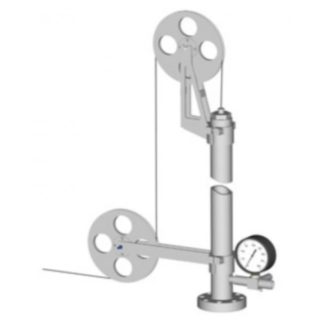
The duration of the operation of a downhole mine without interruption depends not only on the correct installation, but also on reasonable operation, including regular preventive maintenance at a certain time:
- The organoleptic qualities of the liquid are checked daily. If the water becomes cloudy or starts to smell bad, laboratory analysis of the samples will be required.
- The mine of the hydraulic structure is checked every two years.
- Filters are examined, if necessary, they are cleaned every three months.
The regularity of the preventive inspection of the pressure device should be specified in the user manual. But even if the devices work without problems, they must be checked at least once every six months. From time to time, it is required to pump the well to get rid of possible contamination. Determination of the frequency of pumping depends on the flow rate of the water intake.
The results of preventive checks are recorded in a special log, the date must be indicated. These records are used to identify potential problems.
If the hydraulic unit is sealed, special devices - lubricators are used for checking work. They are designed to provide running and lifting of downhole tools on a cable or wire without depressurizing the wellhead.
If the structure is equipped next to a house where year-round living is expected, it is required to prepare it for winter frosts. To prevent the formation of an ice plug in the casing, it is insulated to the level of freezing of the ground. Thermal insulation of the caisson tank is also needed.
The correct arrangement of a water well will allow even a large cottage to be provided with life-giving moisture. With proper operation and compliance with preventive measures, the water intake will last for at least half a century without repair.

